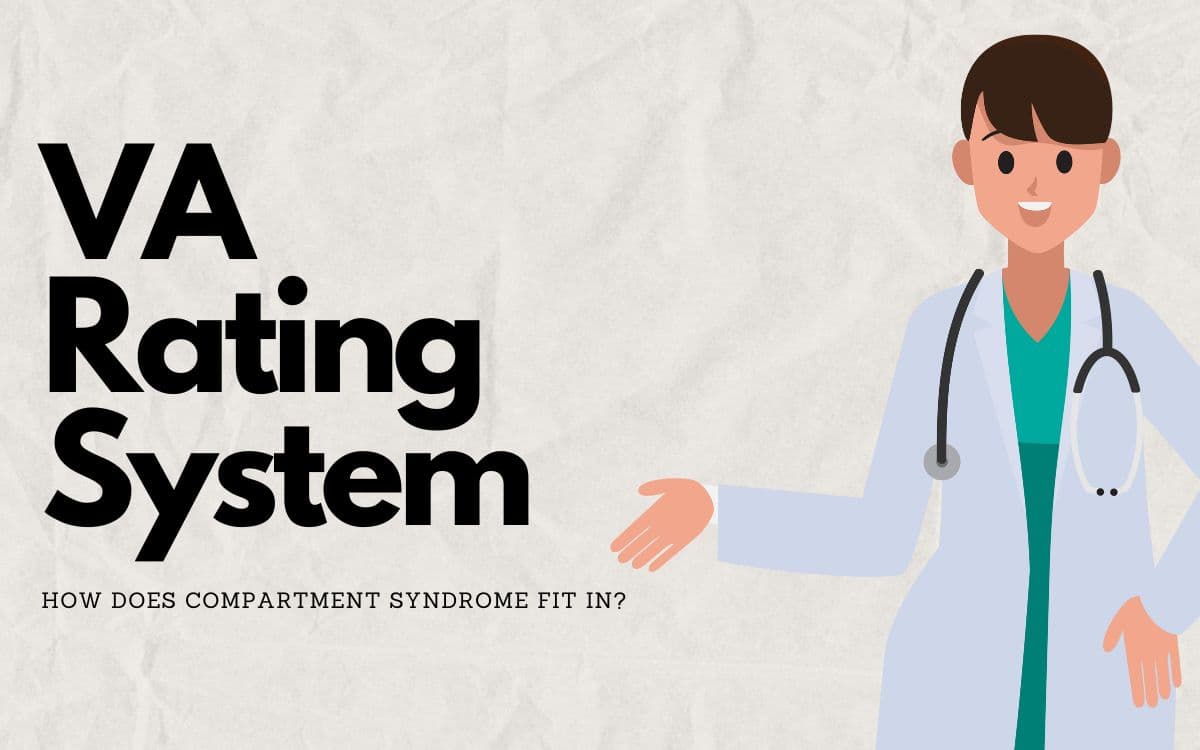VA Ratings are crucial in veterans’ eligibility for compensation and other benefits. Understanding the intricacies of these ratings is essential to effectively advocating for veterans’ rights.
VA Rating System

If you have compartment syndrome, your provider will prescribe pain medicines and physiotherapy. If the condition worsens, you may need surgery, called a fasciotomy, to relieve the pressure.
What is a Compartment Syndrome?
In acute compartment syndrome, a pressure increase in a muscle compartment restricts blood flow. This can damage nerves and muscle cells due to decreased blood supply. It is a medical emergency and requires surgery to cut open the tissue (fasciotomy) to release the pressure. This can prevent permanent damage.
Chronic compartment syndrome is usually the result of a repetitive injury like running or tennis. Tight clothing, casts, or snakebites can cause pain and numbness that worsen with activity. Medicine or surgery can treat this condition.
When a veteran has more than one service-connected disability, the VA uses a combined rating table to determine their efficiency rating. It starts with the most severe disability and then adds the percentage from each less severe disability ranked in order of severity. This is called “VA math,” and it can be confusing.
What Causes Compartment Syndrome?
A severe injury usually causes acute compartment syndrome and is a medical emergency. If left untreated, this can result in permanent muscle damage.
Chronic compartment syndrome, on the other hand, is usually caused by exercise or sports and doesn’t require surgery. It can be caused by tight bandages, plaster casts, or even swelling after surgery.
It can also develop from lying in a position that blocks blood flow during sleep, although most healthy people move around. It can also develop as a side effect of certain medications, like steroids.
VA calculates a combined rating by ranking all your disability ratings from highest to lowest. They then multiply your overall efficiency rate by the percentage of each disability rated at the same level or higher.
Get legal assistance to aid you when you file for a disability claim. Then, they add up all the multiple disability ratings and divide the total by 10. This is how a veteran gets their combined rating.
How Does Compartment Syndrome Affect the VA Rating System?
VA establishes a disability rating by reviewing a veteran’s medical records, including service treatment records, private medical records, and the results of a private medical examination. A veteran’s rating reflects the severity of their condition and determines their monthly compensation amount.
The rating system is based on the Schedule for Rating Disabilities, which contains groups of conditions with specific symptoms. For example, ulcers are rated in the Digestive System group and have several different ratings depending on the severity of your symptoms.
Bilateral conditions are also rated separately because they can affect both sides of the body and impact your ability to function. VA will then combine the two ratings to determine a single combined rating.
There are a few protections in place that prevent VA from reducing your rating. For example, there is the “10-Year Rule,” which states that a disability rating cannot be reduced after being paid for ten years unless there is evidence that your condition has improved.
How Can Compartment Syndrome Be Recovered?
The good news is that if caught early on, nerves and muscles can usually recover from compartment syndrome. But the longer it goes on, the more severe the damage becomes, which can lead to permanent injury and disability.
It’s important to tell your doctor or physical therapist immediately if you notice the symptoms of compartment syndrome because they can run tests to diagnose it.
They may use an advanced MRI scanner to see how much fluid is in your muscles and take pictures at rest, during exercise until you feel symptoms, and after the exercise.
They can also use a newer test called near-infrared spectroscopy to measure how much oxygen is in your blood cells, which is a better way to predict whether your muscles are at risk of developing compartment syndrome.
They suggest anti-inflammatory medications, cross-training (adding different exercises to your workouts), and using softer surfaces like tracks instead of concrete when exercising.
Also Check:



